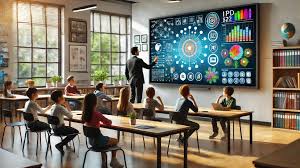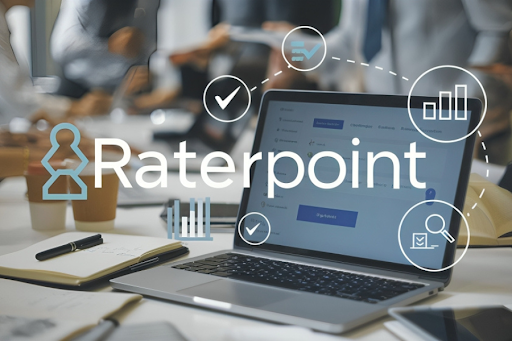The Future of Education in Pune: Will Every Classroom Have an Interactive Flat Panel?
Pune has always been at the forefront of education, a city known for its world-class institutions and innovative learning methods. With the rapid rise of educational technology, one question is gaining momentum: Will every classroom in Pune soon be equipped with an interactive flat panel? The transformation of education is evident, and interactive flat panels in Pune are playing a crucial role in redefining how students learn and engage with knowledge.
A Shift Towards Digital Learning
For decades, education relied heavily on blackboards, chalk, and textbooks. However, as the digital revolution takes hold, traditional teaching tools are being replaced by modern technology. The introduction of interactive flat panel in Pune schools and colleges is reshaping classrooms into dynamic learning hubs. These panels provide a more engaging and immersive way to educate students, moving away from one-way lectures to interactive, student-centered learning experiences.
What is an Interactive Flat Panel, and Why is It Transforming Education?
An interactive flat panel is a large, high-definition touchscreen display that functions as an interactive whiteboard. Unlike projectors and traditional smartboards, these panels offer better clarity, touch sensitivity, and integration with various educational applications. Teachers can write, draw, and interact with digital content effortlessly, making lessons more engaging and collaborative.
The increasing adoption of interactive flat panels in Pune classrooms is driven by several key benefits:
1. Improved Student Engagement
With vibrant graphics, multimedia content, and touch-based interactivity, students are more actively involved in lessons. Instead of passively listening to lectures, they can participate in hands-on problem-solving, quizzes, and group activities.
2. Enhanced Understanding of Complex Subjects
Abstract concepts in subjects like math, science, and geography can be difficult to grasp through textbooks alone. Interactive flat panels in Pune schools provide 3D models, animations, and simulations that help students visualize and understand complex topics more effectively.
3. Real-Time Collaboration and Communication
These panels allow multiple students to interact with content at the same time. Whether working on group projects, brainstorming ideas, or solving problems together, interactive flat panels foster collaboration and teamwork.
4. Seamless Integration with Digital Learning Platforms
Teachers can connect interactive flat panels with cloud-based educational tools, e-books, and learning management systems. This ensures that students have access to a vast pool of resources, making learning more flexible and comprehensive.
5. Time and Cost Efficiency
Unlike traditional chalkboards and projectors that require constant maintenance, interactive flat panels have a long lifespan and require minimal upkeep. Schools investing in this technology find it to be a cost-effective, long-term solution.
Pune’s Schools and Colleges Embracing Interactive Flat Panels
The shift toward interactive flat panels in Pune is already underway. Several prestigious schools and colleges have adopted this technology to enhance the learning experience.
Case Study 1: A Leading International School in Pune
An international school in Pune integrated interactive flat panels across all grade levels. Teachers reported that students showed a significant increase in participation and comprehension, particularly in science and math classes. The interactive simulations and problem-solving exercises led to better retention of information.
Case Study 2: A Renowned Engineering College
A top engineering college in Pune replaced traditional projectors with interactive flat panels in lecture halls. This allowed professors to conduct live coding sessions, demonstrate engineering designs in 3D, and facilitate real-time feedback from students, improving the overall learning experience.
Challenges in Widespread Implementation
Despite the growing popularity of interactive flat panels in Pune, there are challenges that need to be addressed before every classroom can be equipped with this technology.
1. Initial Cost of Implementation
While interactive flat panels are a long-term investment, the upfront cost of purchasing and installing them can be a concern for many schools, especially those with limited budgets.
2. Training for Teachers
Adopting new technology requires training and adaptation. Teachers who are accustomed to traditional teaching methods need proper guidance on how to maximize the potential of interactive flat panels.
3. Digital Infrastructure and Internet Connectivity
To leverage the full capabilities of interactive flat panels, schools need a strong digital infrastructure, including high-speed internet, cloud storage, and reliable IT support.
The Future: Will Every Classroom Have an Interactive Flat Panel?
Looking ahead, the future of education in Pune appears to be deeply intertwined with digital technology. While not every classroom may have an interactive flat panel today, the trend is moving in that direction. As technology becomes more accessible and affordable, we can expect a significant increase in adoption across schools, colleges, and coaching centers.
Governments, private institutions, and ed-tech companies are actively working towards making digital education a reality for all. Funding programs, teacher training workshops, and public-private partnerships are helping bridge the gap, ensuring that interactive flat panels in Pune are no longer limited to elite institutions but reach every student, regardless of their economic background.
Final Thoughts
The question isn’t whether interactive flat panel in Pune classrooms will become a norm—it’s a matter of when. The benefits of interactive learning far outweigh the challenges, making it inevitable that digital classrooms will soon become the new standard. Pune, with its progressive educational ecosystem, is well on its way to leading this revolution.
For educators, students, and policymakers, the goal should be to embrace this technological advancement and ensure that every student has access to an engaging, innovative, and future-ready education. With interactive flat panels in Pune, the classrooms of tomorrow are already taking shape today.






